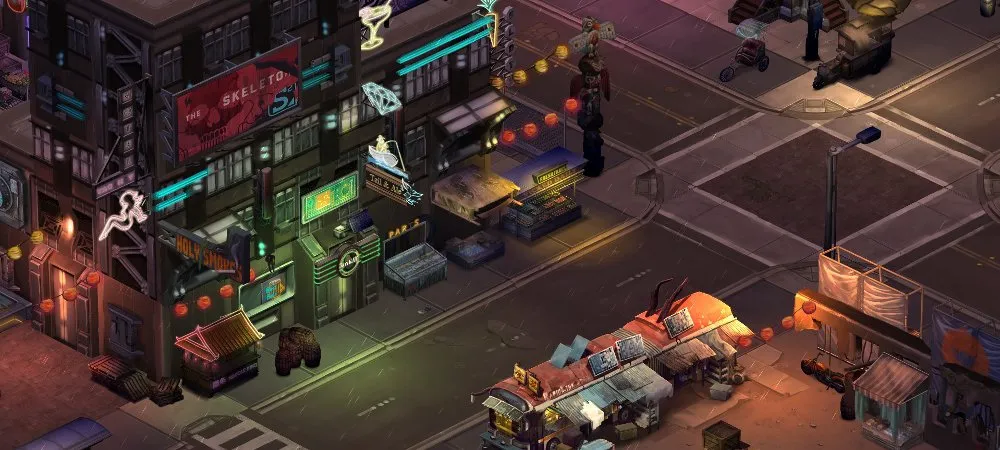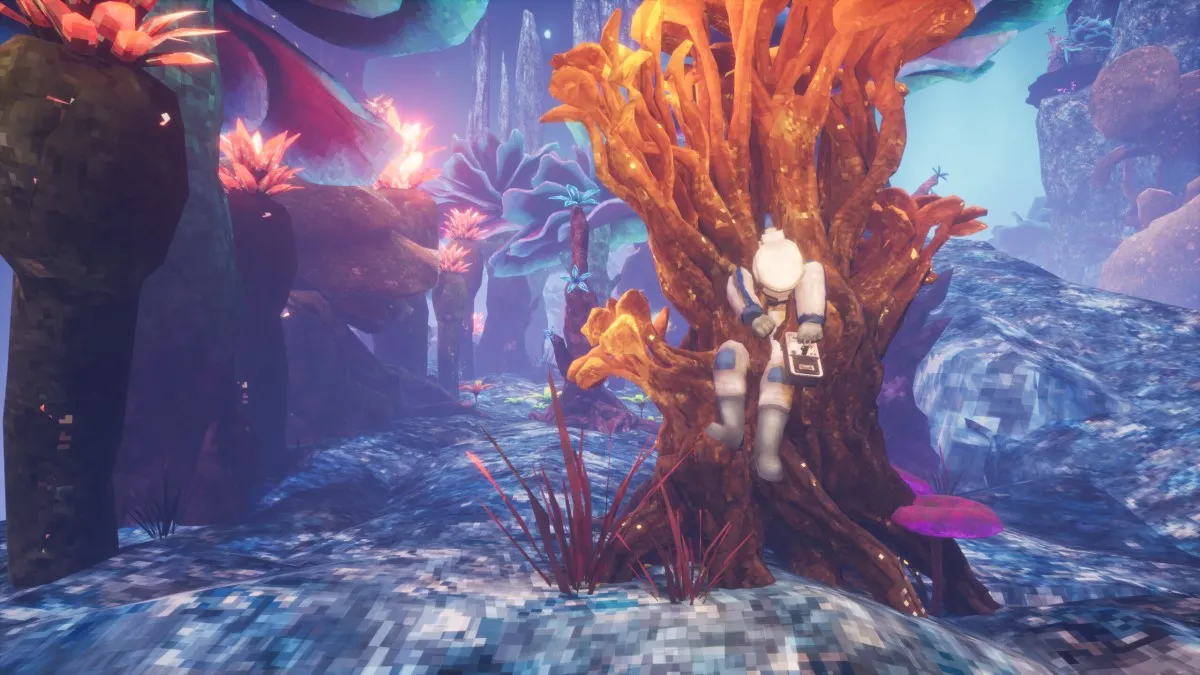An elven hacker, a troll mage, and a robot walk into a bar…
High fantasy, cyberpunk, and film noir collide in a way that makes you think they were meant for each other all along in Harebrained Schemes’ appropriately, if not imaginatively, titled Shadowrun Returns. Based on the popular tabletop role-playing game — which also spawned console adaptations in the early ’90s — it subverts and defies genre expectations in both theme and mechanics, and most importantly allows you to create a troll samurai with a penchant for hacking and shooting people in the face.
Eschewing the loot-filled, exposition-heavy tropes prevalent in the RPG genre, Shadowrun Returns spins a tightly woven tale of conspiracy and revenge where more time is spent engaged in nuanced dialogue and tactical combat than perusing shops and browsing menus. The short but compelling campaign merely serves as an example of what the title offers; under the hood, there’s so much more.

Shadowrun Returns (PC)
Developer: Harebrained Schemes
Publisher: Harebrained Schemes
Released: July 25, 2013
MSRP: $19.99
Rig: Intel i5-3570K @3.40 GHz, 8 GB of RAM, GeForce GTX 670, and Windows 7 64-bit
The beginning of the 21st century brought more than technological innovation to the world of Shadowrun. Magic was reintroduced to the world, ancient dragons reappeared, and infants were born with bizarre mutations, giving rise to a new species of meta-humans. The Sixth World, as it became known, is a place where science and magic co-exist, and huge corporations exploit and manipulate humans and meta-humans alike.
Clinical, perfunctory tech dots the streets next to dirty market stalls, holograms, and spirit totems, with skyscrapers towering above it all. Garish neon signs light up homeless drug addicts huddled in alleys and businessmen gathering beneath large umbrellas, attempting to escape the constant rain. Shadowrun Returns is not a pretty game, but it’s one lavished in detail with an abundance of personality and atmosphere.
In this world where the familiar is juxtaposed to the alien and the exotic, shadowrunners ply their trade. Infiltrators, assassins, thieves — they come from all walks of life, all races, but the thing that binds them is the risk inherent in their meal ticket. It’s not a glamorous job, this fact emphasized by the situation the protagonist finds his or herself in at the beginning of Shadowrun Returns.
Broke, no jobs, a list of dead or missing contacts — things are looking grim. A message from beyond the grave promises to change all of that though: find a retired colleague’s murderer and get a nice, big payday. Seems simple enough. It isn’t, of course.
At its heart, Dead Man’s Switch, the main campaign in Shadowrun Returns, is a classic noir mystery; a murder investigation that opens up a whole can of worms, with conspiracies, police corruption, eerie cults, and a whole slew of untrustworthy ne’er-do-wells spilling out. But it’s not really the mystery that makes the campaign so damn compelling — especially near the end where it starts to peter out and become a bit silly — rather, it’s the exceptionally slick writing and the strong sense of place that is developed over the 12-or-so-hour jaunt.
Characters are driven by relatable motivations: greed, revenge, honor. But it’s through snappy, nuanced dialogue that you learn more beyond these simple driving forces. There’s no plodding, over-exposition; you won’t strike up a conversation and suddenly discover everything about a character, and by the end of my journey through the dilapidated future version of Seattle, I can’t rightly say that I truly know its residents. But the glimpse of their lives that I did get made them all the more fascinating.

Seattle itself and, indeed, the Sixth World in general is similarly revealed in snippets. Mentions of the SINless non-citizens, meta-humans who would need government intervention to gain the right to vote, the conflict between the elves and California flesh out the setting, but Harebrained Schemes never hits players over the head with information. Dead Man’s Switch inspires more reading, and demands that players find out more about the role-playing game that started it all.
Where the earlier Shadowrun games gave players defined characters, such as the SNES version’s Jake Armitage, Shadowrun Returns features a robust character creator. Archetypes exist for the uninitiated, or those just desiring a convenient starting point: the Street Samurai is an all-round warrior, proficient in guns and melee; the Rigger commands little bots that can heal, shoot, and support teams of runners; and Shamans can summon spirits to aid them, or employ magical buffs. Six archetypes are available, all of them distinct. They are just starting points, however, and it’s entirely possible to create a Street Samurai who controls bots, or a Shaman commando.
Perhaps the most interesting of the bunch, in theory, is the Decker: an expert hacker that can infiltrate the Matrix, a blue neon world of digital information, and attack programs. The Decker can enter the Matrix mid-battle, jacking into a nearby port, and then play through its own separate digitized dungeon, helping the rest of the team by unlocking doors, taking over sentry turrets, and discovering information that can later be sold. Unfortunately, the Matrix dungeons and the enemies found therein are a bit bland, offering little diversity, yet it remains an interesting addition to combat scenarios.

A player’s time is split between point-and-click exploration and dialogue and tactical turn-based combat. The former sees surprising use of skills, with strength being used to intimidate folk, decking being employed to hack terminals, and the various unlockable etiquette abilities allowing players to ingratiate themselves with a variety of groups, from corporate wage-slaves to street gangs. The use of what would otherwise just be combat skills in conversation and exploration is reminiscent of Planescape: Torment, and feels true to Shadowrun Returns‘ tabletop forebearer.
Combat is rough, sometimes messy, but comes laden with options. It’s similar to XCOM, with cover-based shooting and spell-slinging dominating battles. Cover is even represented by little shields. The long list of spells, weapon abilities, bots, and the Matrix ensures that scraps never become dull, but what works early on continues to work throughout the game. There’s rarely a need to change tactics, and enemies don’t tend to pose significant threats.
Not being able to turn the fixed camera is a minor problem, but one that rears its head quite a few times. Enemies and allies can still be seen behind cover and walls, represented by a silhouette, but targeting them can be a right pain in the arse. There’s also the occasional scripted sequence that stops a character right in its tracks, leaving them vulnerable and in the open, even if they were on their way to cover.

Although there’s a fair amount of it, combat never feels particularly important outside of its role in the narrative. Intensity is diminished due to the lack of truly dangerous foes, and they never drop items or cash, nor does killing folk dole out experience.
Characters progress in two ways. The first is Karma, Shadowrun‘s experience system. Karma is awarded quite frequently, but not for combat. The positive connotations of “gaining karma” might seem strange in a murky, hardboiled, cynical world such as the the Sixth World, and it does limit interactions to a degree. Players may still opt to roleplay a complete bastard or a selfish goon, but there’s constant pressure to be the “good guy,” as that’s the best way to get more upgrades.
The second way one progresses is through gear upgrades. My use of the word “upgrade” is very deliberate, as there’s very little variety present in the equipment that may be purchased. At set times, the few shops one can access get new stock, with weapons, items, and outfits that simply have slightly better stats than the previous ones that were purchased.
While I’m all for limiting gear to make each piece more meaningful, that’s not really the result here. The lack of questing for loot is welcome, but without anything in its place, I felt like my character build was being restricted.

The linear gear progression is at least in keeping with the mainly linear overall experience. Aside from one or two side missions, Dead Man’s Switch is very much an A-to-B affair — though that’s far from a complaint. The main quest, if you will, is important enough so that it makes little sense to go off gallivanting on some other adventure in the middle of it. The runner’s core mission is given greater weight and urgency with this focus.
As a standalone experience, Dead Man’s Switch is a delight: a clever but short whirlwind tour of the oft depressing world of the shadowrunner. It is not, however, the entirety of Shadowrun Returns. Instead, it merely serves as an example of what can be crafted with the complex editor tool that all players have access to.
The huge, flexible editor holds within it the promise of limitless adventures, both set in the Shadowrun universe and outside it. I am reminded of the many amazing community creations worked on using Neverwinter Nights‘ Aurora Toolset, and how years after the main campaign was forgotten, dedicated modders diligently gave life to countless worlds and stories that completely overshadowed BioWare’s creation. So what we have here isn’t just a great game, but the potential for even greater ones.





Published: Jul 29, 2013 07:00 pm